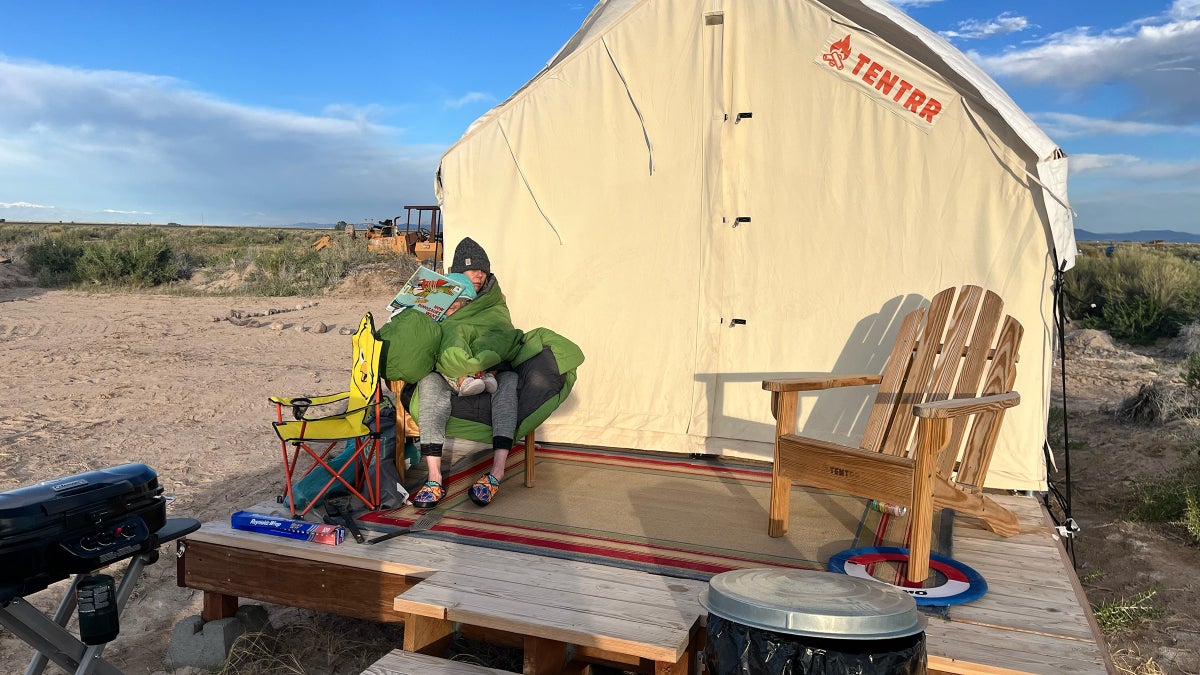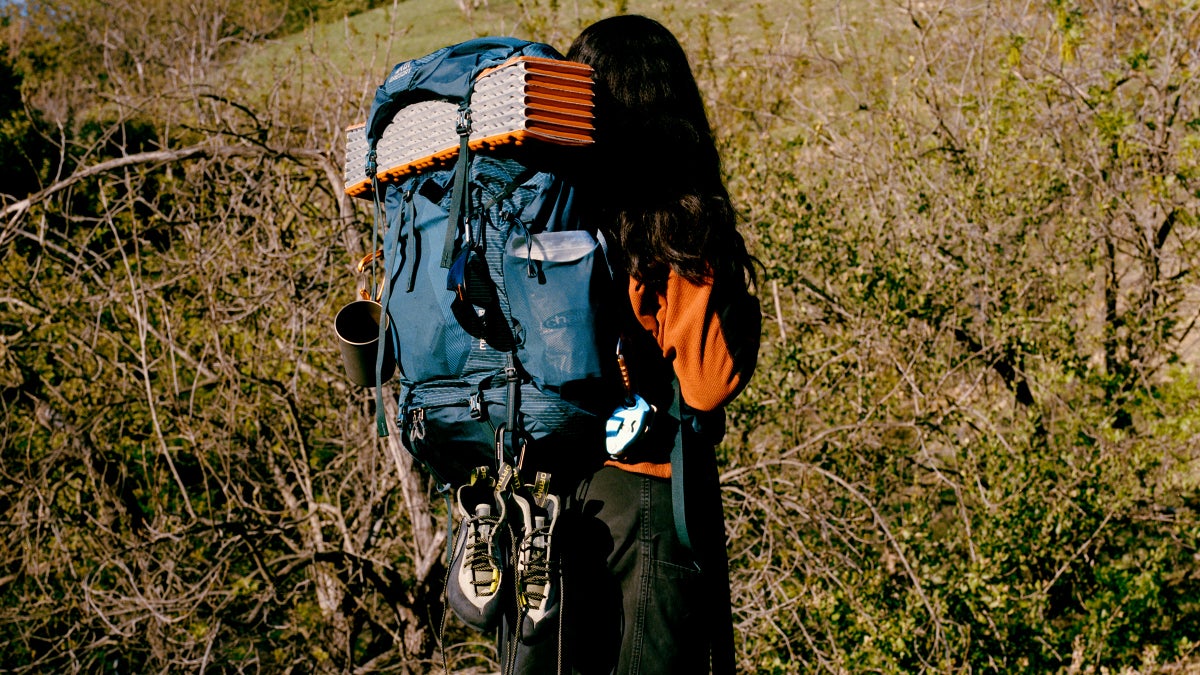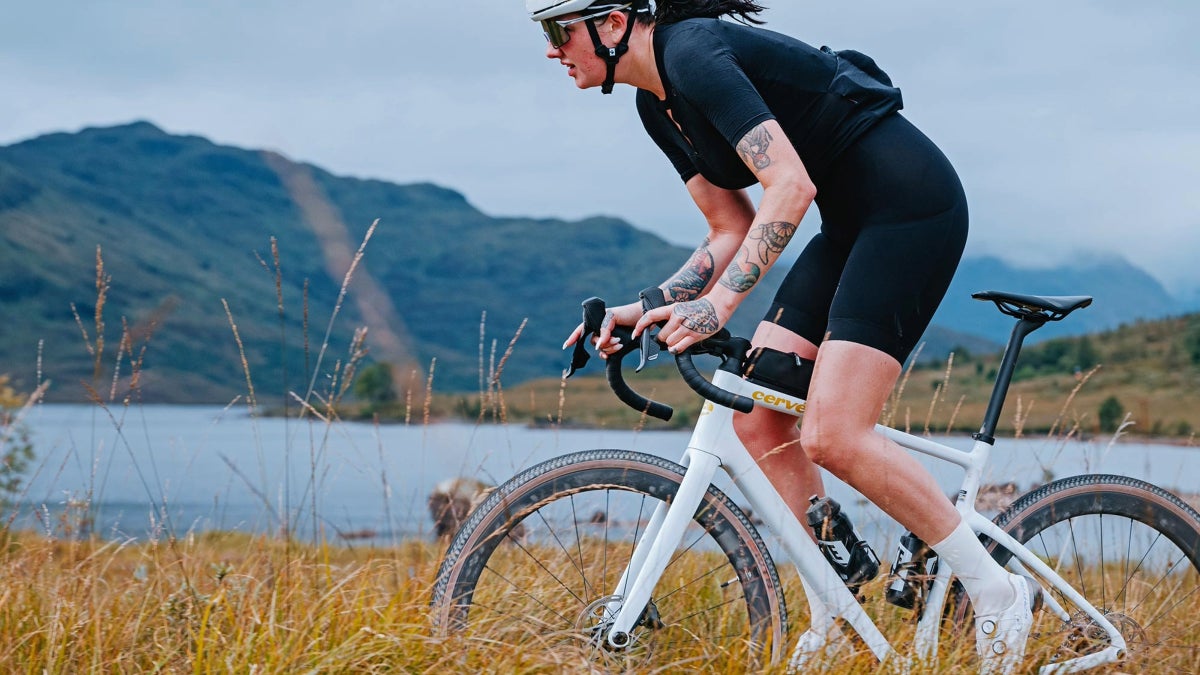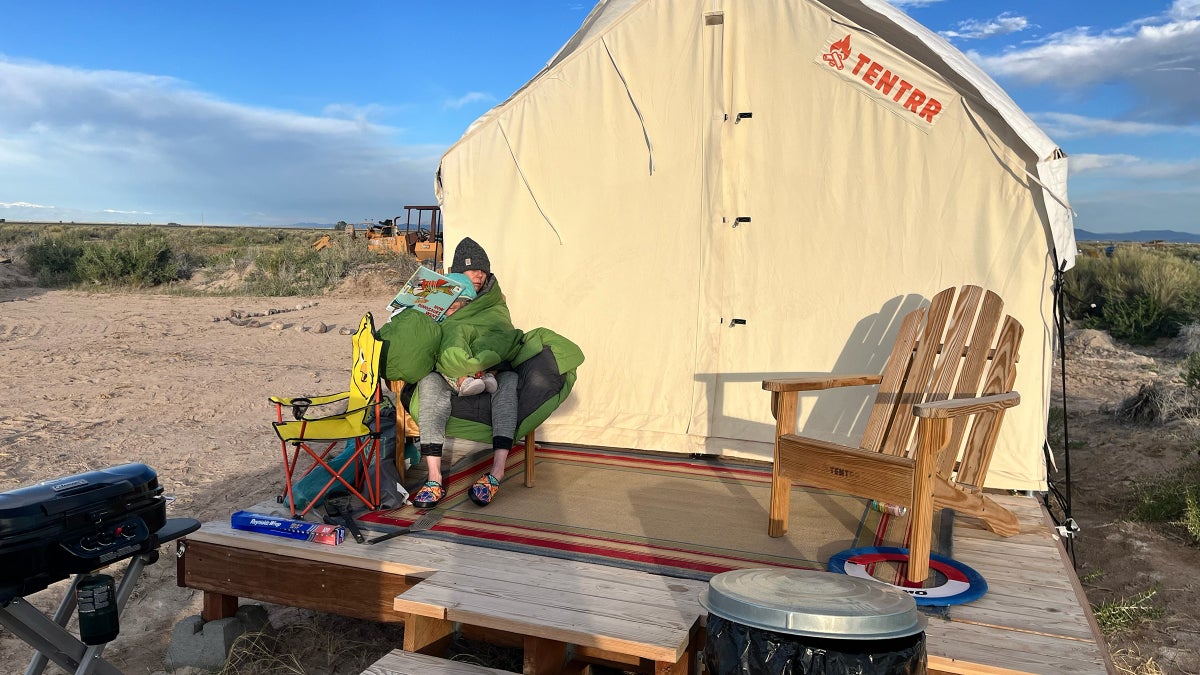
My five-year-old daughter gazed skyward at the Milky Way, while nearby, my wife and I unloaded backpacks, a cooler, and an extensive collection of stuffed animals from our Subaru.
After a few “oohs” and “ahhhs,” we unzipped the safari tent, climbed into a comfy queen-sized bed, and passed out.
So kicked off our recent Memorial Day Weekend trip to Southern Colorado where we hiked, visited a national park, and (most importantly) caught up on our sleep. This last activity was made possible by our secluded glamping site.
That’s right: after decades of sleeping in ultralight tents or under the stars, I have recently embraced glamping (much like a few Outside contributors before me). And after a handful of glamping trips under my belt, I’ve come to some conclusions about this supposedly luxurious activity.
For one thing, glamping is the ideal gateway drug for getting your kids hooked on camping—cue the s’mores and fireside ghost stories. And in some areas of the country, glamping is actually more accessible than traditional tent camping.
But my biggest takeaway is that glamping has an identity crisis, or at the very least a branding problem—because most people still think of the pasttime as a glamorous one.
And it’s not.

Most Glamping Ain’t That Glamorous
I still remember the first time I came across the term glamping almost 20 years ago in a New York Magazine story about supermodel Kate Moss and actor Johnny Depp attending Britain’s Glastonbury Music Festival. They slept in lavish canvas tents, were served gourmet meals and booze, and generally had a fabulous (if overpriced) time.
As the years rolled by, the word entered the American lexicon to define a new type of resort experience in which the wealthy paid a premium to tiptoe right up to the edge of bonafide camping without, ya know, pitching a tent. Stories in The New York Times and other mainstream media outlets told of glamping destinations with five-star menus, massages, and even ornate tree dwellings that would make the Swiss Family Robinson drool with envy.
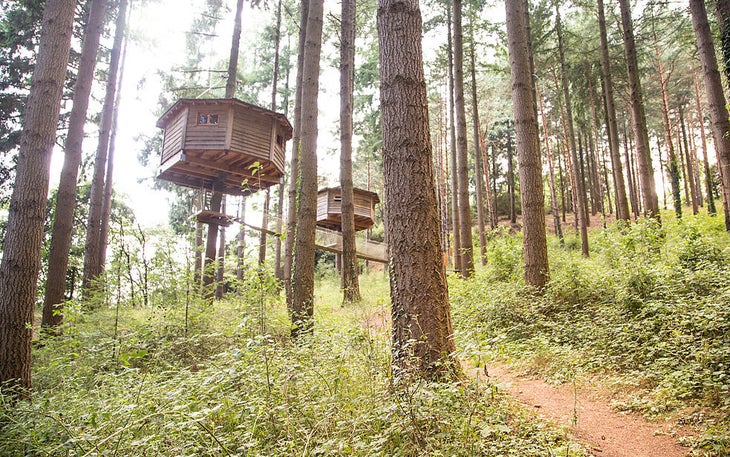
But today, glamping is no longer reserved for the affluent. To search “glamping” on the campsite finder Hipcamp is to come across a wide array of semi-permanent dwellings, from yurts, to TPU-coated polyester tents, to cabin-tent hybrids. Half of Hipcamp’s glampsites sit on properties that also offer traditional tent camping.
On the high end, you can pay several hundred dollars a night. On the low, less than $75.
“People think glamping is luxurious and exclusive, and that is such a loss for the outdoor industry,” says Alyssa Ravasio, the CEO of Hipcamp. “People assume it’s going to be expensive, and think, ‘If I’m going to spend that much money, I’ll just go to a hotel.’”
I recently called Ruben Martinez, who operates a glamping trade organization called Glamping Hub. He told me that the majority of the businesses in his network are essentially semi-permanent tents erected on private land.
Even within this group, there’s a wide array of accoutrements. There’s probably a bed, and maybe even a port-o-potty, but not always, and you can pretty much forget about the massage.
“It’s not like a hotel or a bed and breakfast, where customers know exactly what they’re going to get,” Martinez said.” And right now, the wide range of experiences can cause confusion when people think about glamping.”
Glampsites Are Available When Campsites Are Not
I am a terrible planner, and this deficiency means that holidays and three-day weekends always catch me by surprise. This is a huge no-no in Colorado, where reserving a traditional campsite is akin to scoring Taylor Swift tickets.
Every spring, thousands of would-be campers sit at their computers just before the booking windows open on Rec.gov and the Colorado Parks and Wildlife reservation pages. Within a few hours, most campsites are booked out for all the major summer holidays.
But that’s not the case with glamping sites. In 2024 I started my search just one week before Memorial Day weekend, and I quickly found two open glampsites near Great Sand Dunes National Park.
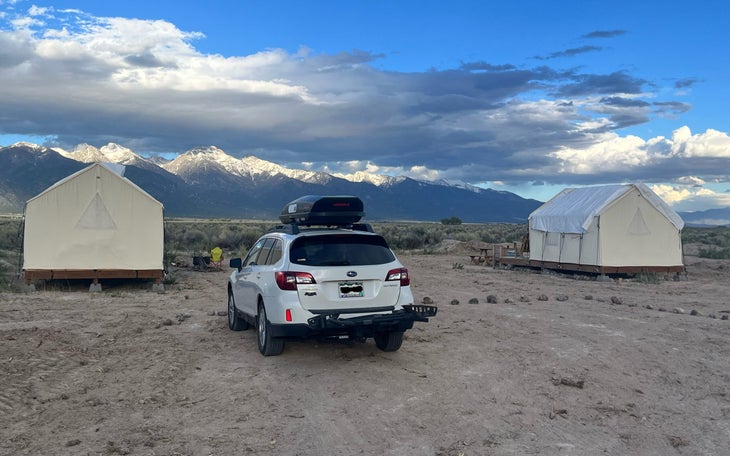
This year I was even lazier. On the Wednesday before the holiday weekend, my wife and I made the rash decision to return to the Sand Dunes. After a brief search, we found a glamping site on a farm near Salida, Colorado. This setup was even more bare bones—no bathroom.
Why are glampsites available when traditional campsites book out months in advance? My experts listed a few reasons. For starters, there’s the perception problem I mentioned above.
“Some people just don’t want to be associated with the word ‘glamping,’“ Martinez said. “The branding is still a hurdle for them.”
And yet, the inventory of glamping sites is rapidly expanding. Martinez told me that he receives about five calls each day from private landowners who want to pitch a tent and start a glamping operation. Ravasio said the number of glamping sites on Hipcamp increased by 25 percent from 2023 to 2024.
“Unfortunately we’re not building many more traditional campsites on public land right now,” Ravasio said. “I wish that wasn’t the case.”
Of course the price tag also keeps competition lower. I’ve paid between $65 and $100 a night for glampsites, double or triple the cost of a traditional tent campsite. But it’s still half the cost of staying at a hotel or an Airbnb. And I also didn’t have to buy a tent to replace the 35-year-old one in my garage.
“If you don’t already own all of the gear, glamping is the most affordable and accessible way to get outdoors,” Ravasio added.
A Way to Hook Kids on Camping
Some parents can take their toddlers on long backpacking trips deep into the wilderness. And then, there are the rest of us.
My wife and I learned early on that we are in the latter group. So, when it came time to finally take our daughter to sleep outdoors, a glamping setup, with a bed and sturdy tent, seemed enticing.
Martinez, who has two older children, said he and his wife took their oldest daughter tent camping when she was just six months old.
“It was an absolute disaster,” he said. “It got colder than we anticipated, so my wife took her into the car and they tried to sleep there. I wondered, ‘Are we ever going to camp again?’”
Giving parents an easy entry point to camping is perhaps the most alluring attribute of glamping. According to Ravasio, families are the biggest group booking glamping vacations on Hipcamp, and the number of family glamping trips on the site has tripled since 2020.
“If you are leaving town Friday after school and arriving that night, not having to set up a tent is a huge improvement to your experience,” Ravasio said. “For a lot of families, that’s the best way to give it a try.”
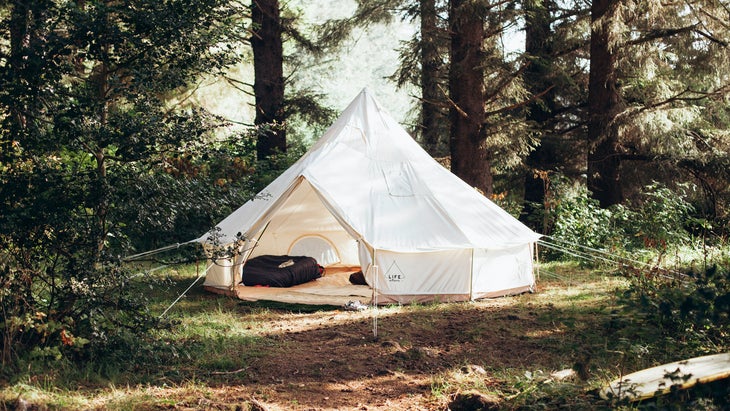
Our 2024 glamping trip fit this description. Our daughter reveled in roasting marshmallows and staring at the stars.
Our glamping tent included a thick comforter and even a propane space heater. These accoutrements saved our weekend when a late-May tempest blew across Colorado’s San Luis Valley one night. The temperature plummeted, and fierce winds buffeted the tent walls. Rain bucketed down and thunder echoed through the valley.
Squeezed between us in the bed, my daughter listened wide-eyed to the storm before drifting off to sleep. When it was light, the two of us strolled around the campsite inspecting the damage that the storm had caused to those with traditional tent setups: tarps and rainflies were strewn about, and some campers hung their rain-soaked sleeping bags on car hoods. People were bleary-eyed and grumpy.
My daughter, meanwhile, skipped through the parking lot toward the port-o-potty, a stuffed animal under each arm.
What About the Name?
I recently came across a 2015 op-ed in the Times written by former Outside contributor Chris Solomon. In the piece Solomon wrote that glamping is “the worst thing to happen to public camping since poison ivy.”
“Not one fire ring should be cordoned off only for those who can pay triple-digit rates to sleep under the stars,” he wrote.
While I agree with Solomon’s sentiment, I feel like the contemporary glamping landscape no longer reflects the luxurious and pampered industry he was raging against a decade ago. And as I’ve quickly converted to glamper status, I’ve often wondered if the outdoor industry needs to either redefine the experience, or at the very least ditch the “glam” part of the word.
I posed this question to both Ravasio and Martinez, and it turns out they were both way ahead of me.
Martinez said his membership base has kicked around a few different terms, such as “Unique Structure” and “Direct Access,” but thus far, nothing has replaced the term.
Ravasio said Hipcamp has tried to loosely define the activity under the title “Structures” and “Outdoor Hospitality,” but that everyone eventually comes back to the 20-year-old word.
Even I have been unable to break free from the word’s clutches. During my call with Ravasio, we both attempted to come up with a new name. After a long pause, we were both stumped.
“Glamping—it’s like this jingle that just sticks in your brain,” Ravasio said. “It’s just too catchy.”
The post It’s Time to Redefine Glamping appeared first on Outside Online.











